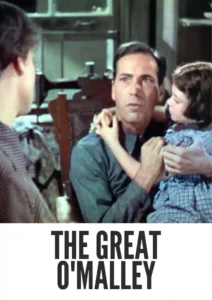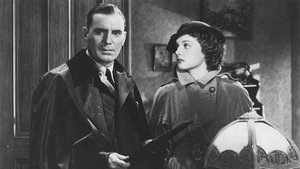Contact: [email protected]
Video Sources 0 Views
- The Great O'Malley


The Great O’Malley 1937 First Early Colored Films Version
Synopsis
Table of Contents
ToggleReview: In The Great O’Malley (1937) – A Heartfelt Tale of Redemption in the Urban Jungle

Introduction
“In The Great O’Malley” (1937) stands as a compelling testament to the resilience of the human spirit in the face of adversity. In this article, we’ll delve into the significance of this classic film, exploring its themes of redemption, justice, and community in the urban landscape.
Check The Full Colorized Movies List
Check Our Colorized Movies Trailer Channel
Understanding In The Great O’Malley 1937: Director, Cast, and Genre
Directed by William Dieterle, “In The Great O’Malley” (1937) showcases his knack for crafting heartfelt narratives that resonate with audiences. The film boasts a talented cast, including Pat O’Brien, Sybil Jason, and Humphrey Bogart, who deliver captivating performances that bring the streets of New York City to life. Blending elements of drama, romance, and social commentary, “In The Great O’Malley” (1937) offers a poignant glimpse into the lives of ordinary people struggling to find their place in a rapidly changing world.
Exploring the World of In The Great O’Malley 1937: Plot and Characters
“At its core, “In The Great O’Malley” (1937) follows the journey of a compassionate social worker, played by Pat O’Brien, who becomes entangled in the lives of a group of disadvantaged children living in a tenement slum. Along the way, he forms a bond with a spirited young girl, portrayed by Sybil Jason, and confronts a corrupt political machine led by a ruthless gangster, played by Humphrey Bogart. As tensions rise and loyalties are tested, O’Malley must navigate the treacherous waters of city politics and personal redemption to protect those he holds dear.
The Art of Film Colorization
Film colorization serves as a transformative tool that enhances the visual experience of classic movies, breathing new life into timeless stories and captivating audiences with vibrant hues. By digitally adding color to black and white films, colorization allows viewers to immerse themselves in the rich tapestry of cinematic worlds, exploring every nuance and detail with fresh eyes and renewed appreciation.
Early Colored Films: A Brief History
The history of colored films traces its roots back to the early days of cinema, with filmmakers experimenting with various techniques to add color to their creations. From hand-tinted frames to early Technicolor processes, the evolution of colored film has been marked by innovation and ingenuity, paving the way for the development of modern colorization techniques that continue to captivate audiences to this day.
In The Great O’Malley 1937 and Its Early Colored Version
The decision to release “In The Great O’Malley” (1937) in a colorized format was met with both anticipation and apprehension. While some welcomed the opportunity to experience the film in vibrant color, others expressed concerns about the potential impact on its visual aesthetic. Nevertheless, the early colored version of “In The Great O’Malley” (1937) offers viewers a fresh perspective on the timeless tale of redemption and community, enhancing its emotional resonance and captivating audiences with its luminous beauty.
The Debate Over Film Colorization
The debate over film colorization continues to divide audiences and critics alike, with proponents praising its ability to breathe new life into classic movies and introduce them to a new generation of viewers, while detractors argue that it compromises the artistic integrity of the original work and diminishes its historical significance. As the debate rages on, filmmakers and audiences alike are left to ponder the merits and drawbacks of colorization in the ever-evolving landscape of cinema.
Examining In The Great O’Malley 1937 as an Early Colored Film
As with any colorized classic, the impact of colorization on “In The Great O’Malley” (1937) is a matter of personal interpretation. Some may argue that it enhances the film’s visual appeal and immerses viewers in its world, while others may feel that it detracts from the stark beauty of the original black and white version. Regardless of one’s stance on the issue, there’s no denying the enduring power of “In The Great O’Malley” (1937) as a timeless tale of redemption and hope that continues to resonate with audiences around the world.
Influence and Legacy: In The Great O’Malley 1937’s Impact on Cinema
“In The Great O’Malley” (1937) has left an indelible mark on the world of cinema, inspiring countless filmmakers and captivating audiences with its timeless themes of justice, compassion, and community. From its unforgettable performances to its stirring message of hope, the film continues to resonate with viewers of all ages, reaffirming its status as a beloved classic of the drama genre.
Director’s Cinematic Legacy: Beyond In The Great O’Malley 1937
William Dieterle’s influence extends far beyond “In The Great O’Malley” (1937), with a diverse body of work that continues to captivate audiences around the globe. From “The Life of Emile Zola” to “The Hunchback of Notre Dame,” Dieterle’s films are celebrated for their emotional depth, visual splendor, and social relevance, solidifying his legacy as one of the preeminent directors of Hollywood’s Golden Age. Through his groundbreaking work, Dieterle has left an indelible imprint on the world of cinema, inspiring generations of filmmakers to follow in his footsteps.
Themes Explored in In The Great O’Malley 1937
“In The Great O’Malley” (1937) explores a myriad of themes, from the transformative power of compassion to the struggle for justice in an unjust world. Through its richly drawn characters and poignant storytelling, the film invites viewers to ponder the complexities of the human condition and the enduring strength of the human spirit. As audiences immerse themselves in the world of “In The Great O’Malley” (1937), they are reminded of the universal truths that bind us together and the timeless values that define our humanity.
Reception and Controversy Surrounding In The Great O’Malley 1937
Upon its release, “In The Great O’Malley” (1937) received widespread critical acclaim, with many praising its heartfelt performances, stirring drama, and timely social commentary. However, the decision to release the film in a colorized format sparked debate among purists, reigniting the age-old discussion surrounding film preservation and artistic integrity. Despite the controversy, “In The Great O’Malley” (1937) remains a beloved classic that continues to resonate with audiences of all ages, reaffirming its status as a timeless masterpiece of the drama genre.
Where to Watch In The Great O’Malley 1937 Online
For those eager to experience the timeless magic of “In The Great O’Malley” (1937), the film is readily available on popular streaming platforms such as Netflix, Amazon Prime, and Hulu. Whether you choose to watch it in its original black and white format or the early colored version, “In The Great O’Malley” (1937) promises to transport you to a world of redemption and hope, where the human spirit shines brightest in the darkest of times.
FAQs About In The Great O’Malley 1937
Q: Is “In The Great O’Malley” (1937) based on a true story? A: No, “In The Great O’Malley” (1937) is a fictional tale crafted by screenwriter Harvey Thew, who drew inspiration from his own observations of urban life and the struggles of the working class.
Q: Who are the main actors in “In The Great O’Malley” (1937)? A: “In The Great O’Malley” (1937) features a talented ensemble cast, including Pat O’Brien, Sybil Jason, and Humphrey Bogart, whose performances bring the characters to life with depth and authenticity.
Q: What awards did “In The Great O’Malley” (1937) win? A: While “In The Great O’Malley” (1937) did not win any major awards, it received critical acclaim for its compelling performances, stirring drama, and timely social commentary.
Q: Why was “In The Great O’Malley” (1937) released in a colorized format? A: The decision to release “In The Great O’Malley” (1937) in color was made to introduce the film to a new generation of viewers and enhance its visual appeal for modern audiences. While the choice to colorize the film sparked debate among purists, it ultimately allowed “In The Great O’Malley” (1937) to reach a wider audience and ensure its continued relevance in the annals of cinematic history.
Conclusion
As we reflect on the enduring legacy of “In The Great O’Malley” (1937), let us celebrate its status as a timeless classic that continues to captivate audiences with its stirring drama, memorable characters, and timeless themes. Whether viewed in its original black and white format or the early colored version, “In The Great O’Malley” (1937) remains a shining example of the power of cinema to inspire, entertain, and provoke thought. Through its compelling narrative and heartfelt performances, the film reminds us of the enduring power of compassion, justice, and community in the face of adversity, reaffirming its status as a beloved classic of the drama genre.











